Camouflage is one of nature’s most ingenious survival strategies, allowing animals to blend into their surroundings, evade predators, and ambush prey. For rare animals, camouflage becomes even more critical as their small populations make them vulnerable to threats.
This article explores how rare animals use camouflage to survive, examining various types of camouflage techniques, notable examples, and the evolutionary significance of this adaptation.
The Science Behind Camouflage
Camouflage, also known as cryptic coloration, is an evolutionary adaptation that enables animals to conceal themselves. It involves visual deception through coloration, patterns, shapes, and textures that allow the animal to blend with its environment. Camouflage serves two primary purposes:
- Defense: To avoid detection by predators.
- Predation: To ambush prey without being noticed.
Key mechanisms of camouflage include:
- Blending with the background: Animals match their environment’s colors and patterns.
- Disruptive coloration: Patterns break up the outline of an animal’s body.
- Mimesis: Resembling objects in the environment, such as leaves or rocks.
- Active camouflage: Dynamic changes in color or texture to adapt to varying surroundings.
Types of Camouflage
1. Blending with the Background
Many animals have evolved colors and patterns that closely resemble their habitat. This allows them to remain unnoticed by predators or prey.
Examples:
- Snow Leopard: The spotted coat of the snow leopard mimics rocky terrain, providing it with near-invisibility while stalking prey.
- Polar Bear: Its white fur blends seamlessly with Arctic snow, making it nearly impossible to detect in the icy wilderness.
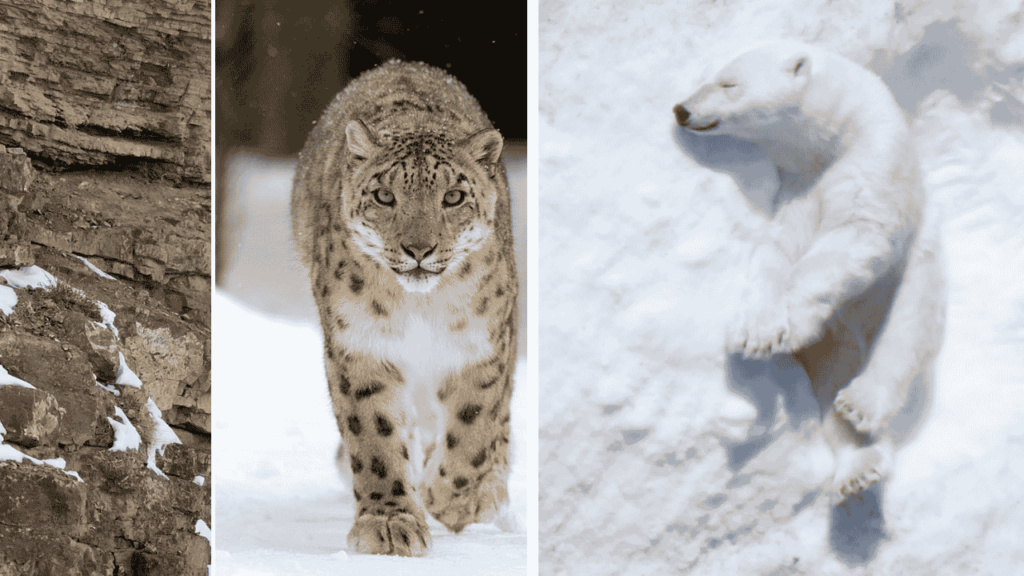
2. Disruptive Coloration
This technique involves breaking up the outline of the animal’s body with patterns, making it harder for predators to recognize its shape.
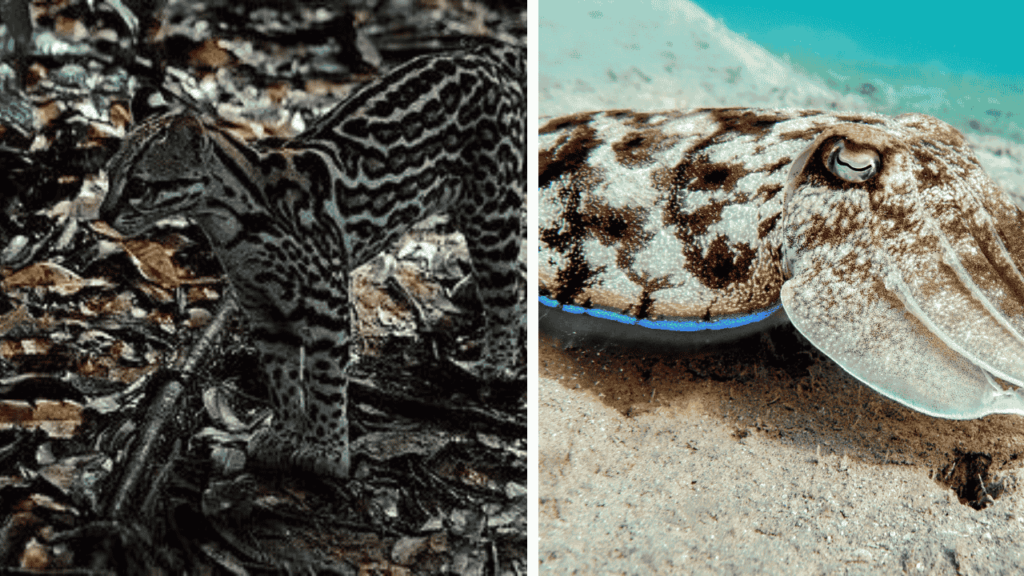
Examples:
- Ocelot: The jungle-dwelling ocelot has a spotted coat that disrupts its outline, allowing it to blend into dense foliage.
- Cuttlefish: In marine environments, cuttlefish use contrasting patterns to confuse predators.
3. Active Camouflage
Some animals have the remarkable ability to change their coloration and texture to match their surroundings. This dynamic adaptation is seen in species that inhabit diverse environments.
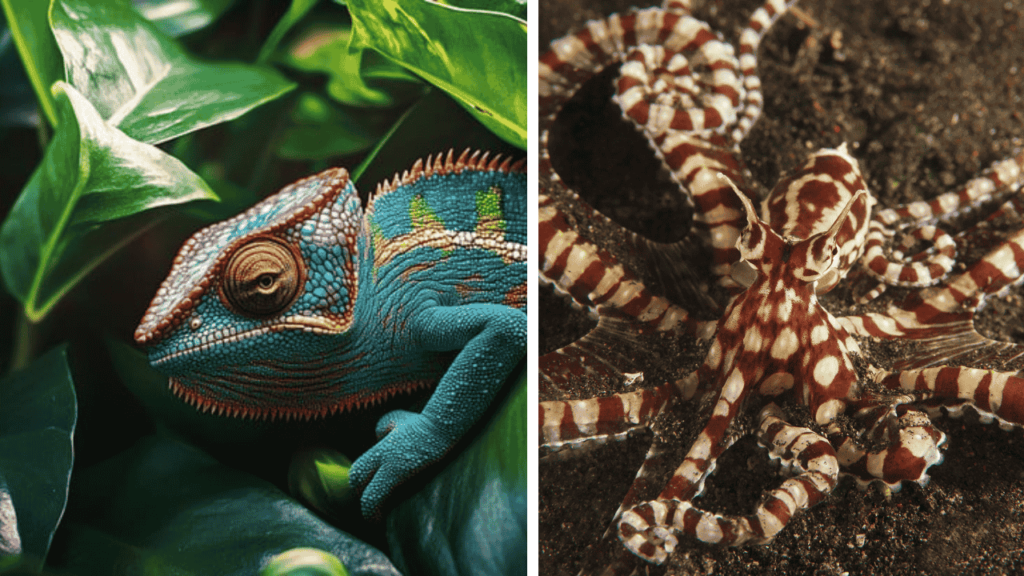
Examples:
- Mimic Octopus: It can imitate the appearance of different marine species, as well as the color and texture of sand or coral.
- Chameleon: Known for its color-changing ability, the chameleon adapts to its environment while also using coloration for communication.
4. Mimesis
Mimicry involves resembling specific objects like leaves, branches, or even other animals to avoid detection.
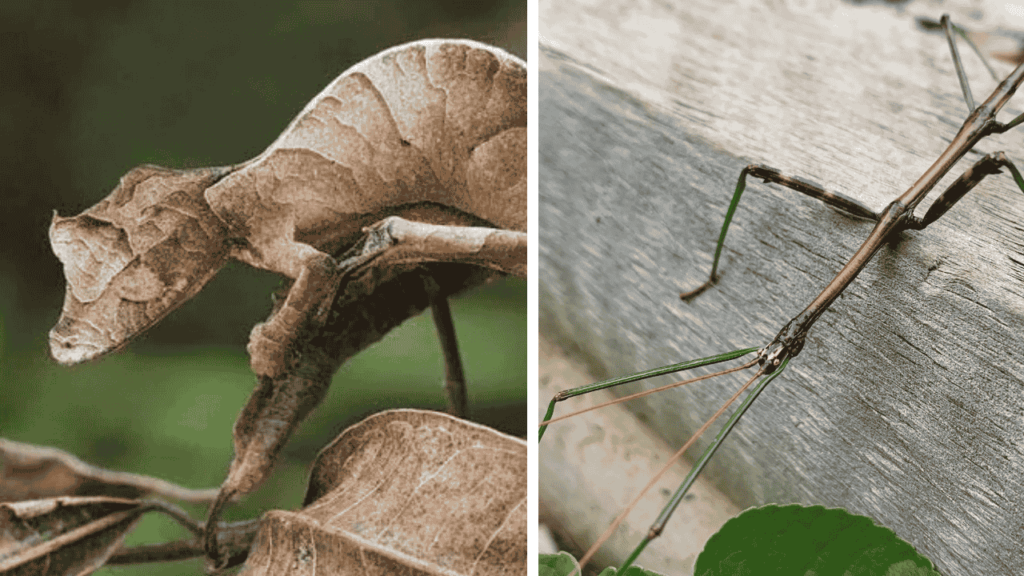
Examples:
- Leaf-Tailed Gecko: Its leaf-like appearance allows it to blend seamlessly into the forest canopy.
- Stick Insect: These insects look like twigs, making them nearly invisible among branches.
| Type of Camouflage | Definition | Example |
|---|---|---|
| Blending with Background | Matching the environment’s colors and textures. | Snow Leopard, Polar Bear |
| Disruptive Coloration | Patterns that break up an animal’s outline. | Ocelot, Cuttlefish |
| Active Camouflage | Ability to change color or texture dynamically. | Mimic Octopus, Chameleon |
| Mimesis | Mimicking objects in the environment to avoid detection. | Leaf-Tailed Gecko, Stick Insect |
Rare Animals and Their Unique Camouflage
1. Snow Leopard
The elusive snow leopard, native to Central Asia’s mountainous regions, is a master of camouflage.
- Camouflage Technique: Its spotted fur blends perfectly with rocky terrain, making it hard for prey to detect its presence.
- Survival Advantage: Helps in stalking prey and avoiding human detection in increasingly fragmented habitats.
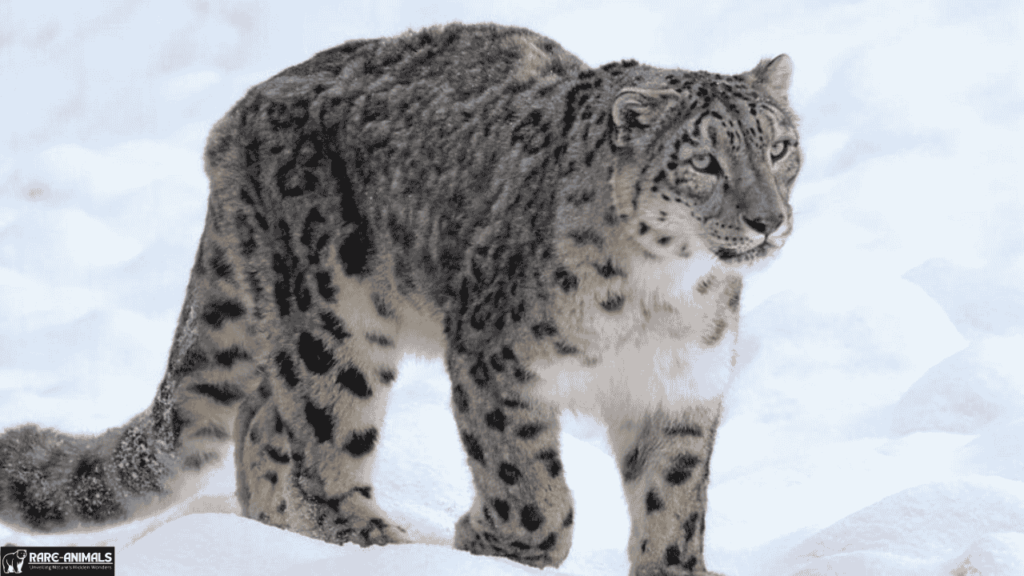
2. Mimic Octopus
Found in tropical waters of Southeast Asia, the mimic octopus is a marvel of active camouflage.
- Camouflage Technique: Can mimic the shape, color, and behavior of various marine species, such as lionfish or sea snakes.
- Survival Advantage: Confuses predators and enhances its ability to hunt unnoticed.
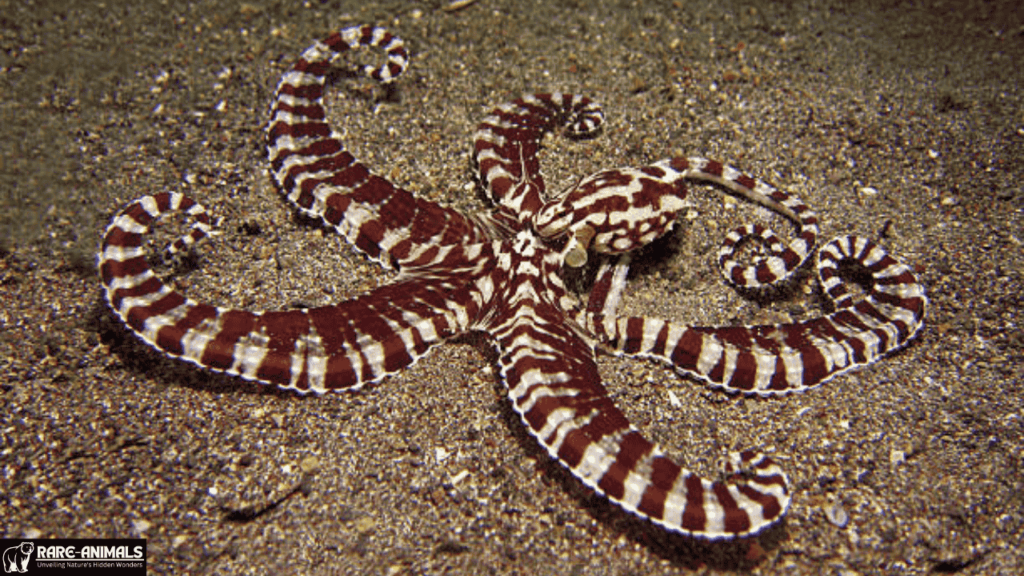
3. Leaf-Tailed Gecko
Endemic to Madagascar, this rare gecko uses mimesis to perfection.
- Camouflage Technique: Its body resembles a dried leaf, complete with veins and ragged edges.
- Survival Advantage: Avoids detection by predators in the dense forest canopy.
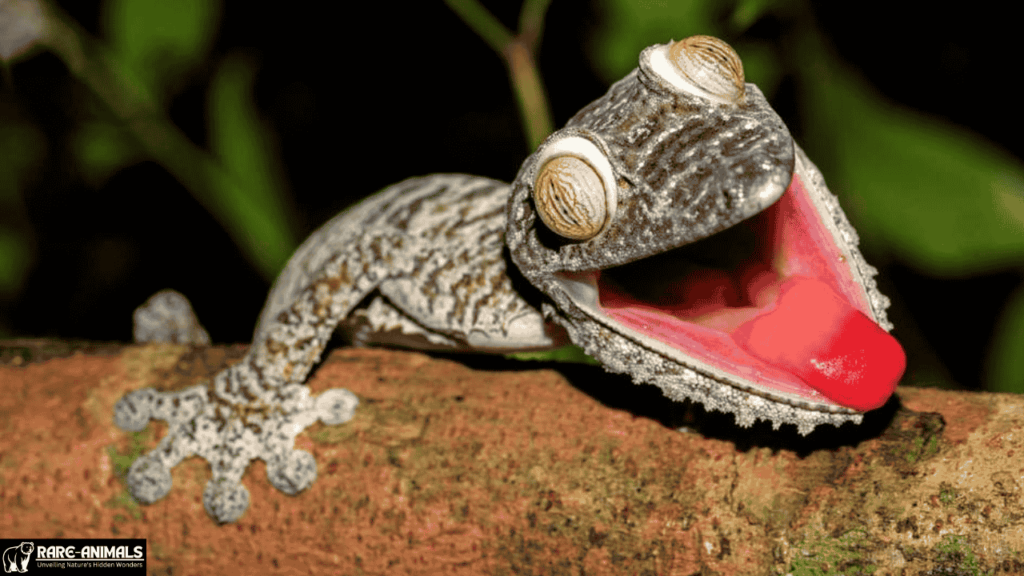
4. Ocelot
The ocelot, a rare wildcat native to South America, thrives in dense jungles.
- Camouflage Technique: Spotted patterns blend with the undergrowth and forest shadows.
- Survival Advantage: Allows it to ambush prey while staying hidden from larger predators.
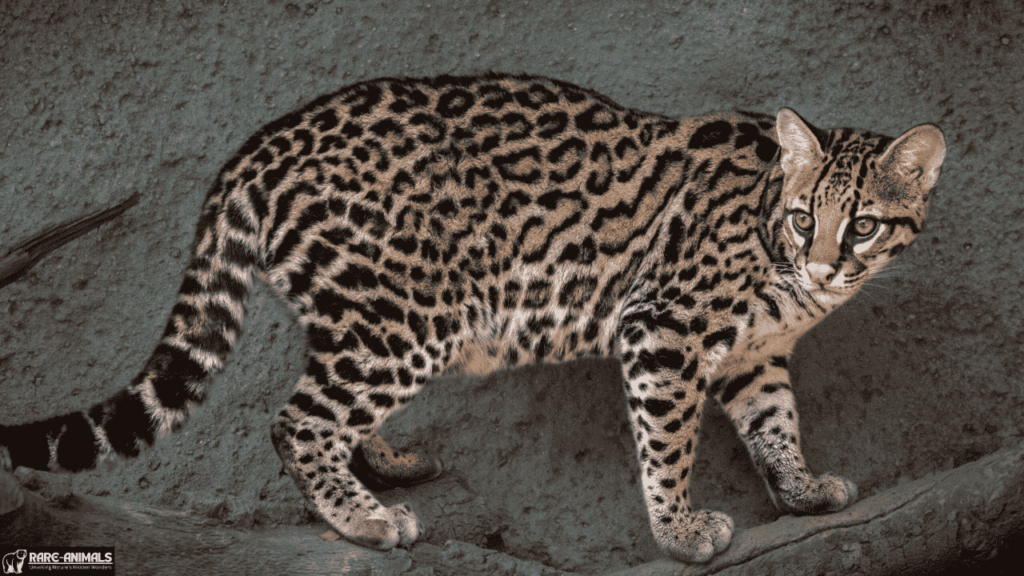
5. Axolotl
The axolotl, a critically endangered amphibian native to Mexico, relies on its environment for camouflage.
- Camouflage Technique: Its coloration blends with the murky waters of lakes and canals.
- Survival Advantage: Protects it from aquatic predators in its shrinking habitat.
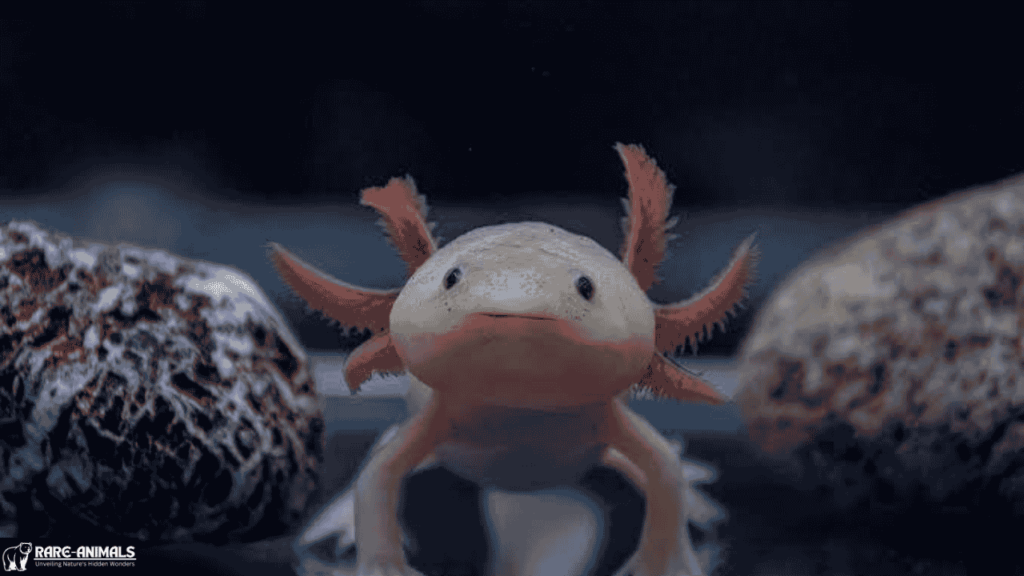
| Animal | Habitat | Camouflage Technique | Survival Advantage |
|---|---|---|---|
| Snow Leopard | Rocky mountains | Blending with rocky terrain | Stalking prey, avoiding detection |
| Mimic Octopus | Tropical marine waters | Active camouflage | Confusing predators |
| Leaf-Tailed Gecko | Forest canopy | Mimesis (leaf mimicry) | Avoiding predators |
| Ocelot | Dense jungles | Disruptive coloration | Hunting and predator evasion |
| Axolotl | Murky freshwater | Blending with background | Predator evasion |
Evolutionary Significance of Camouflage
Survival and Reproduction
Camouflage directly impacts an animal’s survival and reproductive success. By evading predators and ambushing prey, animals can live longer and reproduce more effectively.
Adaptation to Changing Environments
As environments change, species with effective camouflage are better equipped to adapt. For rare animals, this ability is crucial for survival in fragmented or degraded habitats.
Natural Selection
Over generations, camouflage traits are honed through natural selection. Animals with superior camouflage are more likely to survive and pass on their genes.
The Role of Camouflage in Conservation
For rare and endangered species, camouflage plays a vital role in survival amidst increasing human activity and habitat destruction. Conservation efforts often focus on preserving habitats to ensure these species can continue utilizing their natural camouflage.
Conclusion
Camouflage is a testament to nature’s ingenuity, showcasing how rare animals adapt to survive in challenging environments. From the snow leopard’s rocky disguise to the mimic octopus’s transformative abilities, these adaptations are vital for evading predators, hunting prey, and thriving in their habitats.
As human activities threaten ecosystems worldwide, understanding and protecting these unique species is essential for maintaining biodiversity.
The stories of rare animals using camouflage inspire awe and highlight the importance of preserving their habitats. By safeguarding these environments, we can ensure these species continue to grace our planet with their remarkable adaptations.
FAQs
Q1: What is camouflage, and why is it important for rare animals?
Camouflage is an adaptation that helps animals blend into their surroundings, making them harder to spot. It is crucial for rare animals as it aids in avoiding predators and hunting prey.
Q2: How does the mimic octopus use camouflage?
The mimic octopus can change its color, texture, and even shape to resemble other marine species or its surroundings, confusing predators and prey.
Q3: Why is the snow leopard’s camouflage effective?
The snow leopard’s spotted coat blends seamlessly with the rocky terrain of its mountainous habitat, making it nearly invisible to both predators and prey.
Q4: What is mimesis in camouflage?
Mimesis is a form of camouflage where animals mimic objects in their environment, such as leaves or twigs, to avoid detection.
Q5: How can we help protect rare animals that rely on camouflage?
Conserving their habitats, reducing human impact, and supporting conservation initiatives are key to protecting these species and their natural adaptations.

Alveena is an experienced content writer with a knack for crafting engaging and insightful pieces. She thrives on breaking down complex ideas and presenting them as clear, captivating content that resonates with readers.

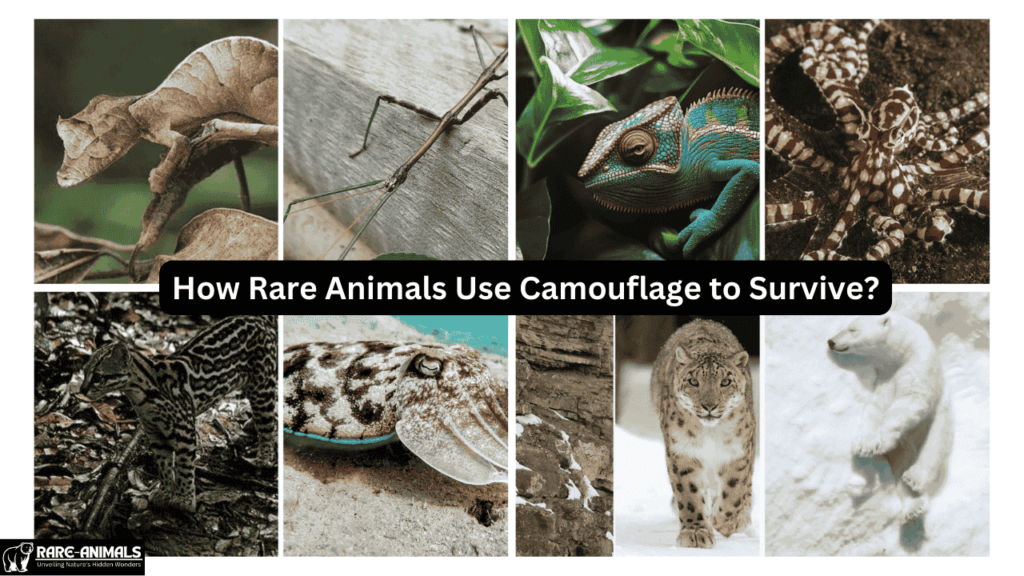

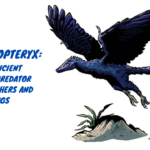




1 thought on “How Rare Animals Use Camouflage to Survive?”